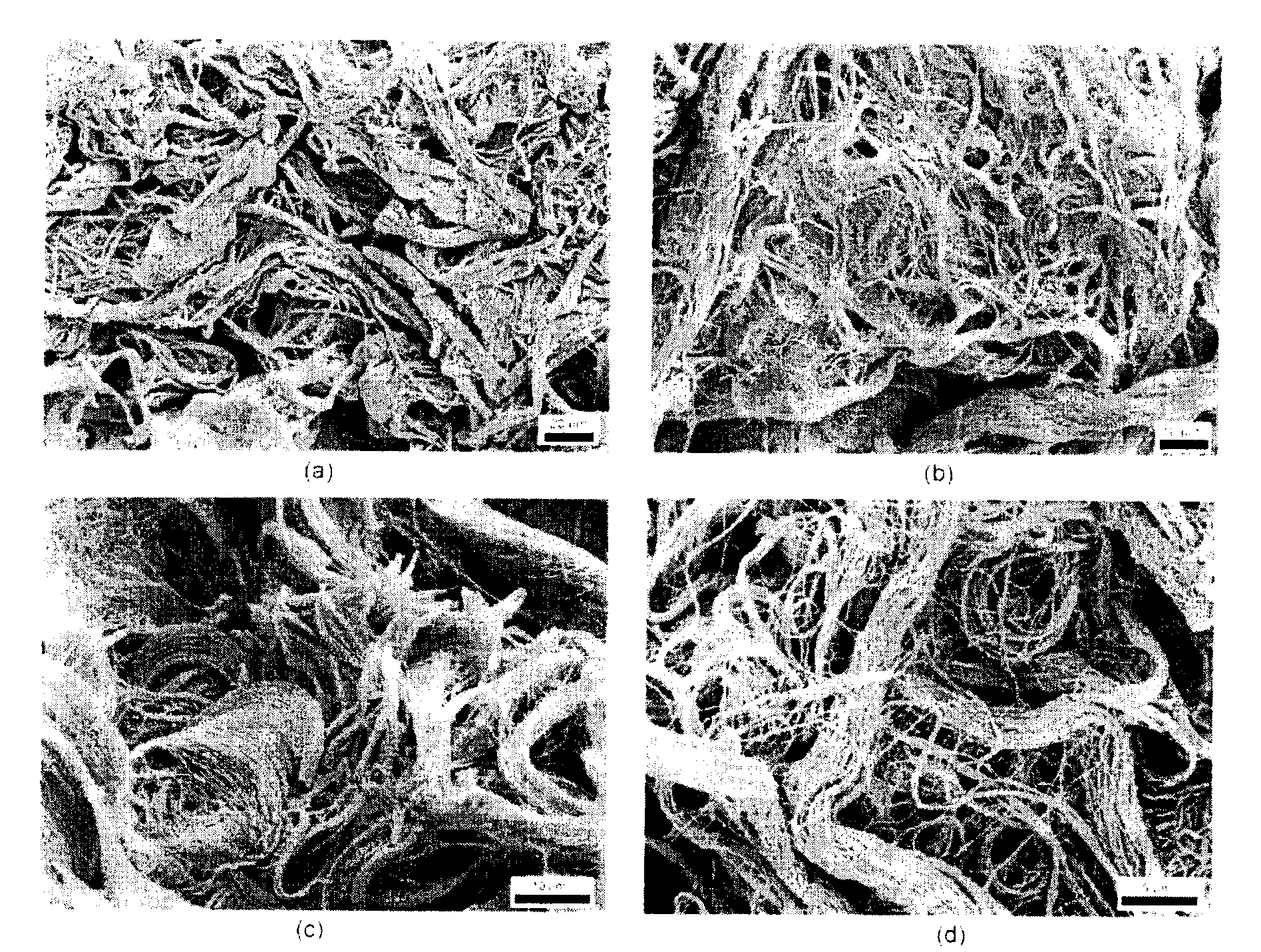Decellularized adipose tissue
A technique for adipose tissue and decellularization, used in tissue regeneration, tissue culture, animal cells, etc.
- Summary
- Abstract
- Description
- Claims
- Application Information
AI Technical Summary
Problems solved by technology
Method used
Image
Examples
Embodiment 1
[0098] Material
[0099] All chemicals were purchased from Sigma-Aldrich Canada (Oakville, Canada) unless otherwise stated and used as received.
[0100] adipose tissue acquisition
[0101] Ex vivo adipose tissue samples and lipoaspirates were collected from female patients undergoing elective abdominal or thoracic surgery at Kingston General Hospital and Hotel Dieu Hospital, Canada. These tissues would normally have been discarded as part of routine operating procedures. These samples were sent to the laboratory on ice and extracted for no more than 2 hours in sterile strips of cation-free phosphate-buffered saline (PBS).
[0102] Adipose Tissue Decellularization
[0103] A decellularization protocol detailed in Table 3 was used for the processing of ex vivo adipose tissue and adipose extract material. Prior to processing, freshly isolated adipose tissue samples are cut into small pieces weighing approximately 20-25 grams. As for liposuction, its volume was chosen to pro...
Embodiment 2
[0147] The decellularized adipose tissue described here was used as a culture substrate for adherent cells, and more particularly for attachment and proliferation of human adipose stem cells on decellularized adipose tissue scaffolds. The result is as Figure 8 (a) and (b), shown with CellTracker TM Green (Invitrogen)-labeled adipose stem cells (shown in white) and decellularized adipose tissue labeled with Alexa fluor 350 (Invitrogen) (shown in gray) were easily visualized under a confocal microscope. Figure 8 (a) and (b) show representative images of 1×10 6 Adipose stem cells were seeded on decellularized adipose tissue (200mg) and 2.5×10 6Adipose-derived stem cells were seeded on decellularized adipose tissue (200 mg), and the two were in hypoxia (5% O 2 , 37°C) for 7 days. Figure 8 (c) is shown using PicoGreen (Invitrogen) ADSC proliferation on decellularized adipose tissue scaffolds was analyzed by measuring total DNA content. Decellularized adipose tissue scaffo...
Embodiment 3
[0149] Preliminary in vivo studies on decellularized adipose tissue have been carried out in a subcutaneous transplantation model. The study complied with the guidelines of the Canadian Council for the Care of Animals (CCAC). All work was managed at the Animal Disposal Laboratory within Botterell Hall, Queen's University. Efforts to develop an animal care protocol were reviewed and approved by the Queen's University Animal Care Committee (UACC).
[0150] Figure 9 (a) to 9(f) show histological and microscopic data. In these studies, 1 × 10 6 A decellularized adipose tissue scaffold isolated from adipose-derived stem cells from Wistar male mice was transplanted into the dorsal dermis of Wistar female mice ( Figure 9 (a)). Each mouse received two unseeded and two decellularized adipose tissue scaffolds seeded with ADSCs. At 4, 7, and 14 days post-transplantation, the animals were humanely sacrificed, and then the decellularized adipose tissue scaffolds were removed. Macr...
PUM
 Login to View More
Login to View More Abstract
Description
Claims
Application Information
 Login to View More
Login to View More - R&D
- Intellectual Property
- Life Sciences
- Materials
- Tech Scout
- Unparalleled Data Quality
- Higher Quality Content
- 60% Fewer Hallucinations
Browse by: Latest US Patents, China's latest patents, Technical Efficacy Thesaurus, Application Domain, Technology Topic, Popular Technical Reports.
© 2025 PatSnap. All rights reserved.Legal|Privacy policy|Modern Slavery Act Transparency Statement|Sitemap|About US| Contact US: help@patsnap.com



